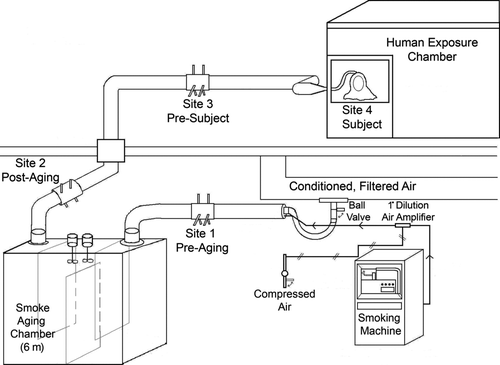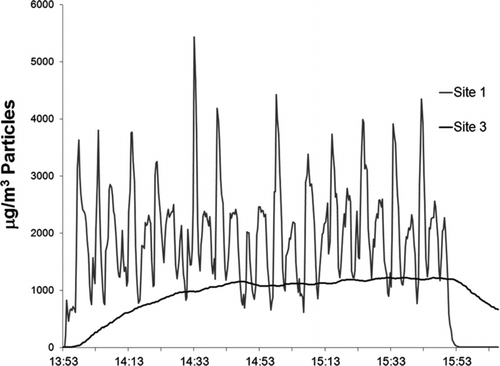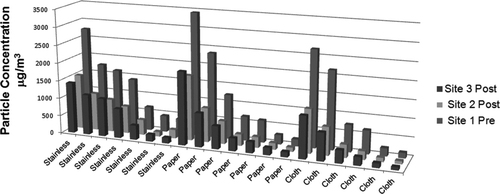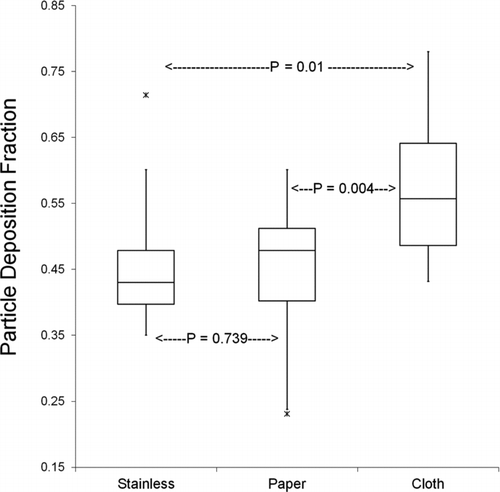Figures & data
FIG. 1 Design schematic of smoke-aging system, showing smoke generation, dilution, transport, aging, sampling, exposure, and containment.

FIG. 2 Particle concentration (mg m−3) at sites 1 and 3. Data from the AM510 and DustTrak instruments were adjusted to gravimetric equivalents (by multiplying by a factor of 0.27) to show particle deposition within the system. Mean concentration at site 1 was 1.98 mg m–3. Plateau concentration at site 3 was 1.14 mg m–3. Passage through the aging chamber reduced particle concentration fluctuation.

TABLE 1 SMPS particle count, particle size and mass calculations
FIG. 3 Particle concentration in the aged-cigarette-smoke generation system: results from 20 separate experiments testing the effects of aging, input particle concentration, and the addition of paper and cloth to the aging chamber, on particle deposition. Substantial fractions of the total particulate material in the smoke aerosol deposit between site 1 (before the aging chamber) and sites 2 and 3 (after the aging chamber). This result is consistent across particle input values and surface types.

FIG. 4 Particle deposition fraction for three surfaces: median, interquartile range, maximum, minimum, and outlying values are shown. Particle deposition is significantly different between cloth surfaces and paper or stainless steel (control) surfaces.
